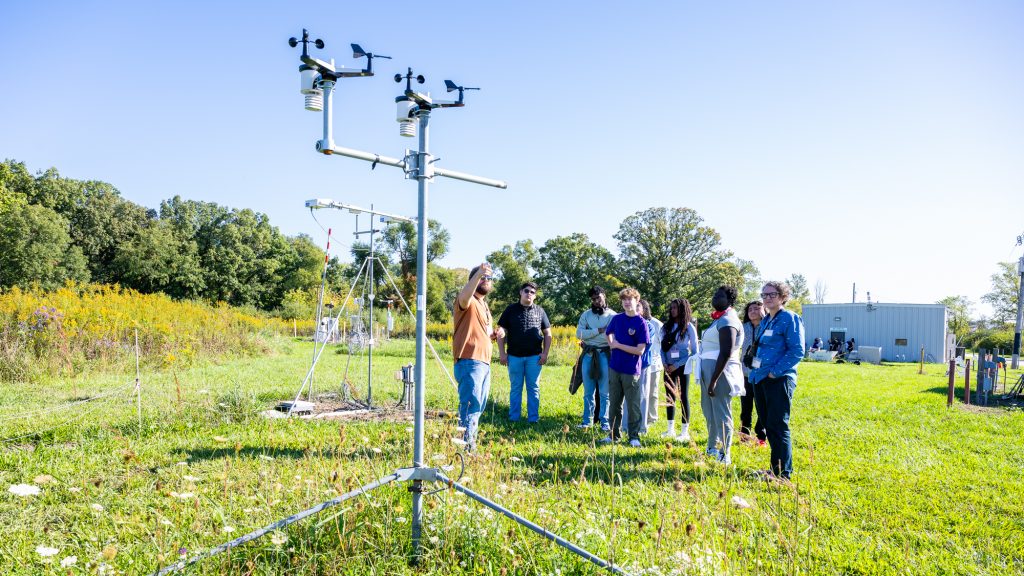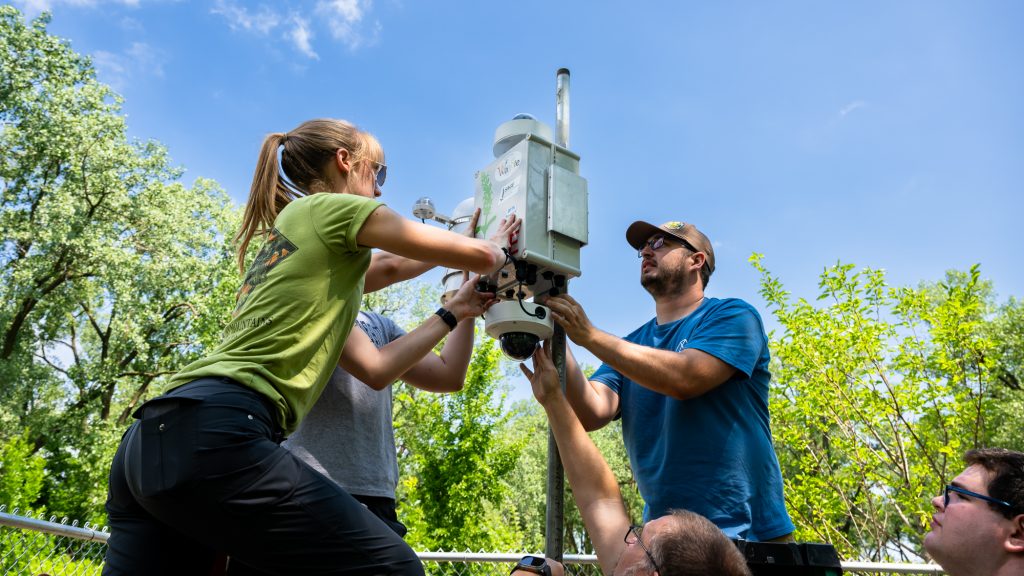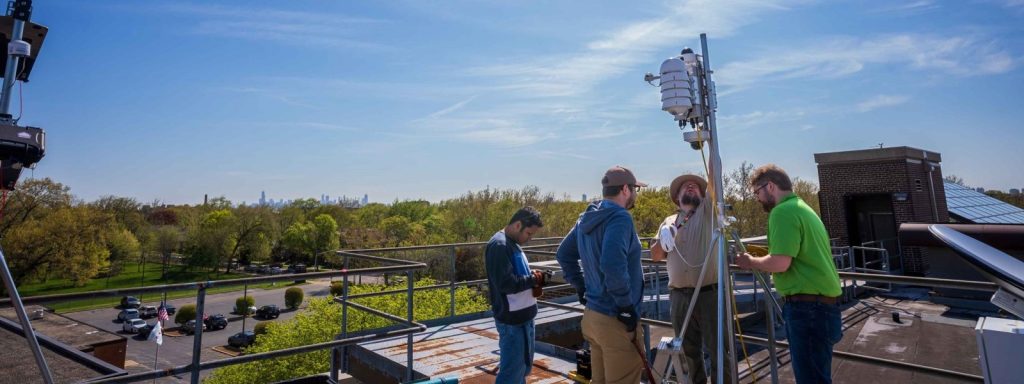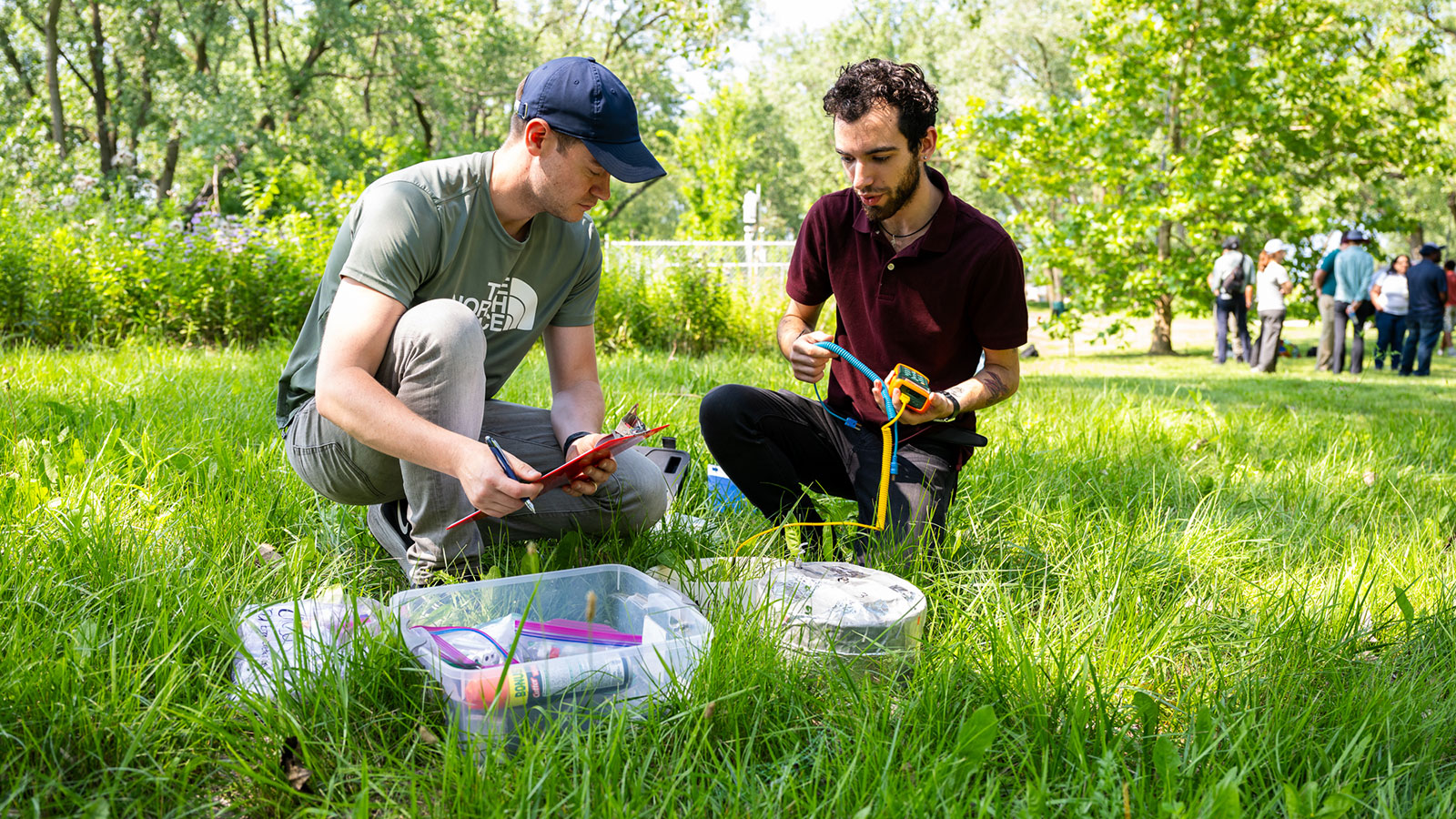
ARGONNE
Located on the grounds of Argonne Testbed for Multiscale Observational Science (ATMOS), this location is home to cutting-edge instruments and world-class experts that observe, record and interpret complex data to help the country become resilient to changes in climate. ATMOS is the heart of instrumentation for CROCUS–before any CROCUS instrumentation is deployed and installed at a CROCUS site, it is first tested at ATMOS.

CHICAGO STATE UNIVERSITY
Located on the southern end of the project’s node network, it includes a rooftop and ground location. The equipment is measuring air quality, weather conditions, rain and soil conditions. Researchers are particularly interested in data from the ground at this site. The nearby neighborhood of Chatham experiences some of the most extreme flooding in Chicago and the heavier, more frequent rains associated with climate change will only make matters worse. The new sensors will help researchers understand how different surfaces, landscapes and vegetation can absorb or channel away water.

HUMBOLDT PARK – COMING SOON!
Humboldt Park was selected because it’s a prairie filled with grasses and trees but surrounded by tall buildings and busy roads. This research will help the Humboldt Park community learn about the risks of flooding, heat stress and wind so they can make the best choices to protect themselves, their homes and their community from climate change.

NORTHEASTERN ILLINOIS UNIVERSITY
Instrumentation is located on the rooftop of Bernard J. Brommel Hall on the university’s main campus. The first CROCUS site to go online, researchers installed installed a Waggle node — a grouping of sensors that measure wind, temperature, rainfall, snow accumulation, radiation and air pollution. Additionally, the equipment is capable of edge computing — processing data at the source of collection so that researchers can access environmental readings in near-real time.

NORTHWESTERN UNIVERSITY
Located on Northwestern’s Evanston campus near the shore of Lake Michigan, this CROCUS site captures lake effects on weather and air quality. Site instrumentation is deployed on the roof of Scott Hall, in campus greenspace, and on maple trees surrounding the building to measure air quality, weather conditions, rain, and soil conditions. This site is positioned at the northern end of the project’s node network, which helps to understand gradients in climate, water, and plant growth from lake-to-inland and north-to-south across the Chicago metro area.



